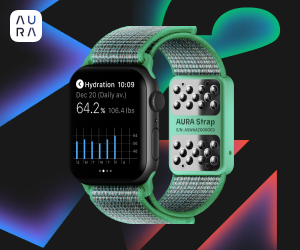GOOGLE ADWORDS
Introduction.
Google Ads is a tool, service or program of Google, which offers it to carry out sponsored advertising. The Google sponsored ads will appear next to the organic results in the searches carried out by the users in the search engine, through keywords or the searches they carry out on the Internet, and for that reason, throughout the unit different ones will be studied ways to reach the user or target audience of each brand or company.
Google Adwords was born on October 23, 2000 and, initially and until very recently, it was called that, but for some time now it was renamed Google Ads due to several changes that Google made to its tool of advertising.
In the new version, Google Ads, the ads become more efficient, since you can take data from the audience, know how they interact with the ads and thus achieve greater effectiveness in each ad, in each campaign, since the base of that online advertising works is precisely to analyze user behavior.
Before moving on to the basics of Google Ads, a few concepts should be clear:
The basis of marketing is the stimulus or need that a user has and the searches carried out to satisfy those needs. This is so from traditional marketing, and that is why the Internet offers the user a new way of connecting the user with the brand or company. It is at this point in the purchase process, when brands must do their job to reach that user who is looking for that product or service that the brand can offer.
In the purchase process, it is not enough just to be present at that moment of search, we must also accompany him at the moment of decision, as well as in the after-sale, which is when the user has purchased the product or service and is encouraged to leave an assessment of the acquisition you have made. In this way, we will be able to know your level of satisfaction and it will be essential, since your assessment can influence the purchase decision of other users.
On the other hand, there will be users who do not intend to buy our products or services but the brand or company must be visible so that this group of potential potential customers are interested in it and, finally, decide to acquire it. This would be equivalent to creating such a need for them.
After knowing these different groups of users, it follows that we cannot reach all of them in the same way, or with the same strategy, hence this prior strategy is fundamental, since we will establish:
- Goals.
- Target audiences.
- Tools.
- Language.
- Budget.
Thus, the basics of Google Ads are:
It allows us to reach different groups of users, who have different intentions, and who approach a brand in different ways or not.
Example
There are users who do not know a brand and have no need to purchase anything related to it, and there are users who are looking for a specific product offered by a brand. You have to know how to reach both and Google Ads allows us to achieve it, with different campaigns through its different advertising networks (Search, Display, Shopping ...).
Google Ads
It allows you to choose which platforms you want to appear on, that is, if a brand wants to appear only in video, mobile, display or text search advertising ads. It allows you to fully customize online advertising.
allows advertisements or campaigns to appear on any device: smartphones, tablets, computers, Internet TV ... In other words, it allows the user to publish their advertisements in different formats, and reach the target audience through different platforms.
Through Google Ads we will know at all times what is our ROI (Return on Investment), that is, of the money I invested, what return I obtained, in addition to knowing how to optimize it and choose different forms of payment of the advertising in which it is invest.
A Google Ads ad or campaign can be paused, stopped, canceled, started, tested at any time, meaning there are endless options that can be managed to optimize each ad or campaign to the maximum.
The Google Ads tool
It also allows you to customize the hours and days on which you want to appear, that is, through continuous analytics it provides data on when the user tends to connect more or convert more. Therefore, it will be essential to know this data, to optimize the campaign as much as possible and invest a budget in these time slots.
Register in Google Ads.
In this section we will analyze, step by step, and after knowing a little theory, how to create an account in Google Ads to start running advertising campaigns.
And before registering this account in Google Ads, we must be clear about some of the concepts of the tool:
ID number:
The ID number is a unique number to identify a Google Ads account, our Google Ads account. This same number will be associated with other Google tools such as Analytics or Google Merchant Center. The ID number is important that we have it clear because it will be the way to have support with Google.
And as it can be deduced, we click on the "register now" button, we will observe how the steps to follow and indicated by the tool are quite intuitive.
In this second step we are asked for the website to which we want to allocate our advertising campaigns, in addition to the email address to which we are going to allocate our campaign and in this step we will indicate if we want to receive useful information related to our own tool, for which it is advisable to select "yes, I want to receive personalized help and suggestions to improve performance".
In the next step, we must select the country or region where we are physically, and indicate that "we have read and accepted the agreement", and we will click on the "Create account" button.
How To Create Google Ads Account | How To Setup Google Ads Account |Google Ads Tutorial |Simplilearn
Next, we will be inside the tool and we will have to select the option to "start" and we will be inside our Google Ads profile. At this time we can see our type of account, whether it is private or business, what is our physical address and our name, as well as our client ID. To start working with the tool, we must click on the "send" button, so that our data reaches Google and we confirm what we have done.














Comments
Post a Comment